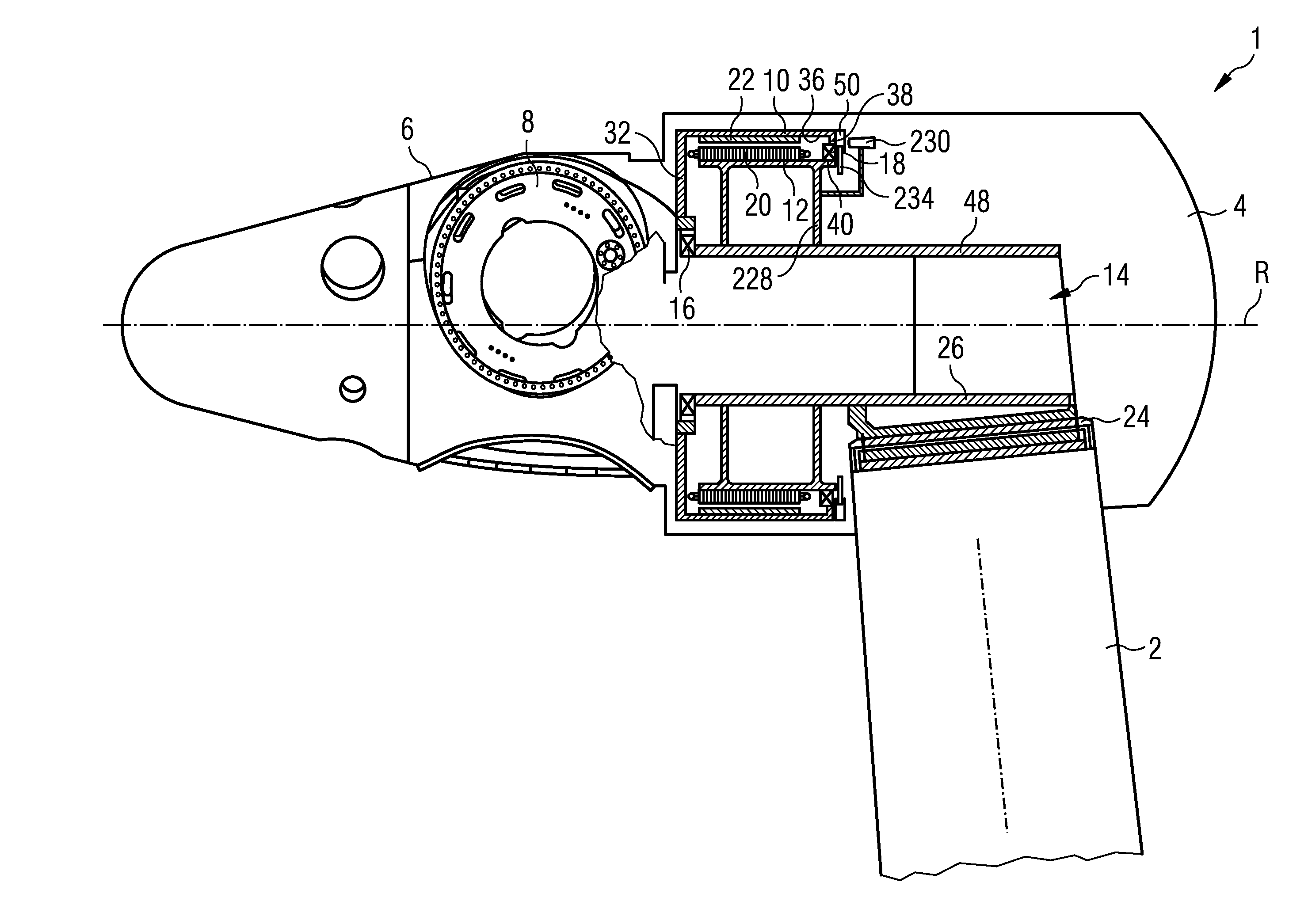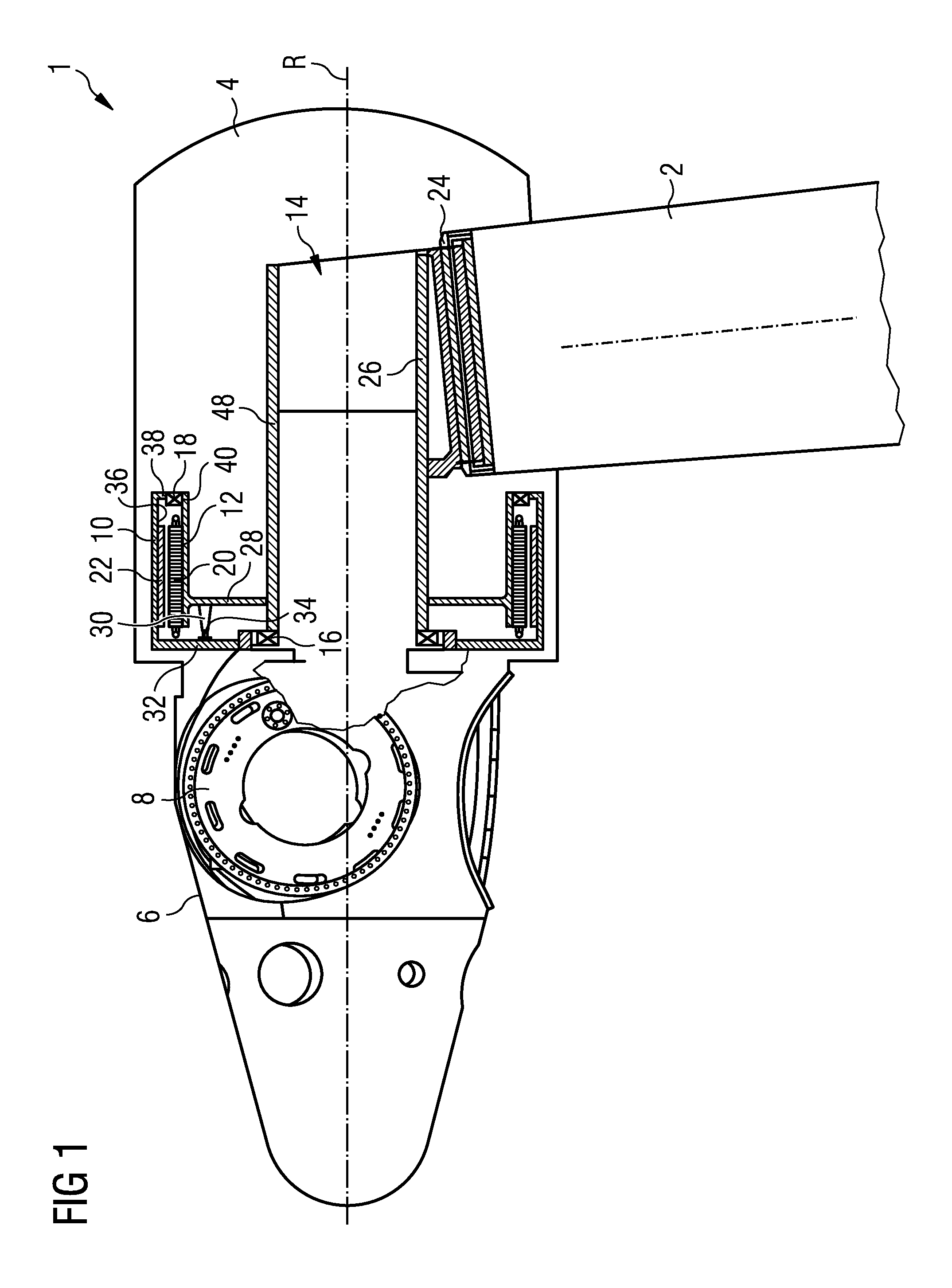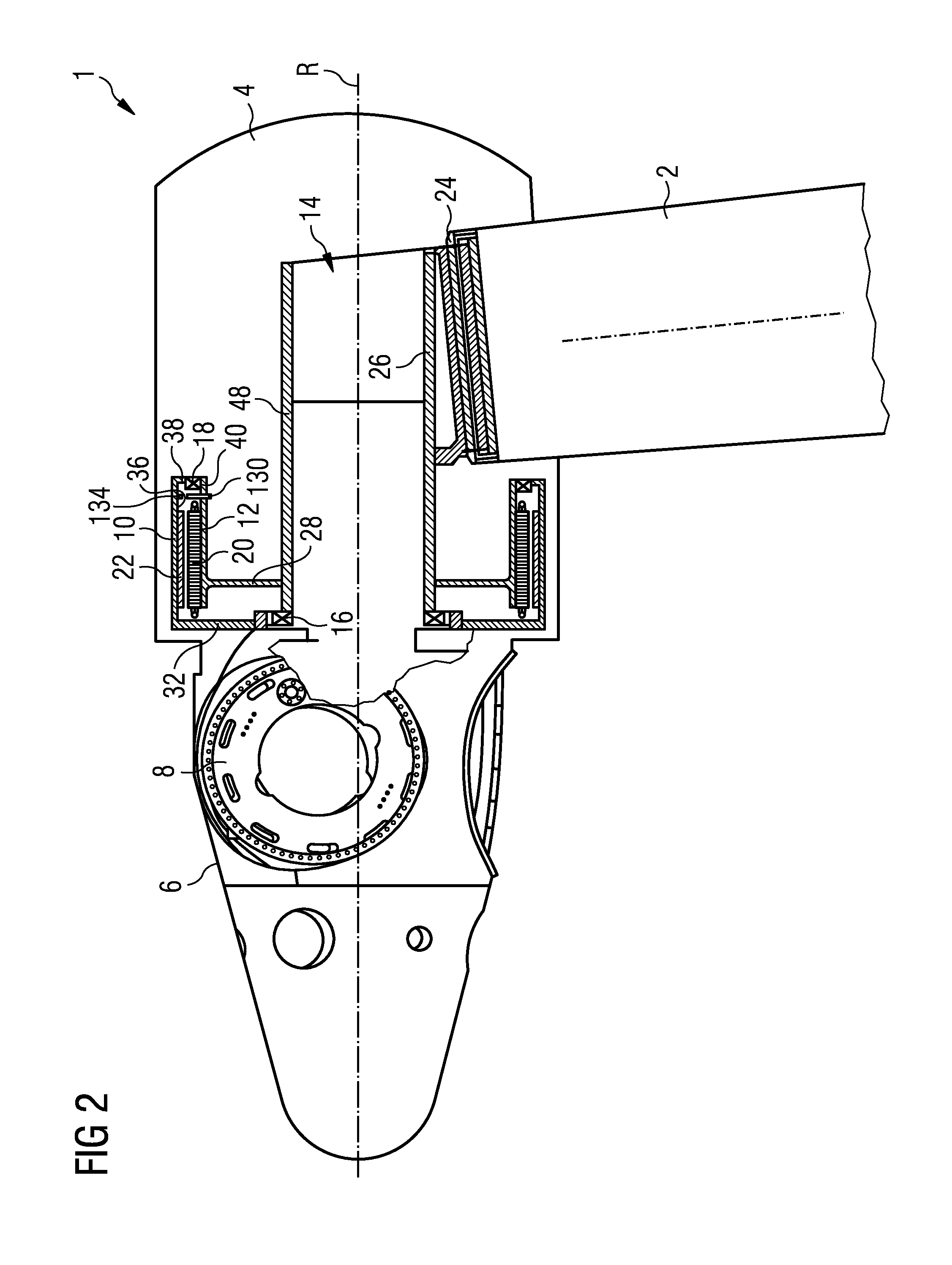Direct drive wind turbine
a direct drive, wind turbine technology, applied in the direction of electric generator control, machines/engines, mechanical equipment, etc., can solve the problems of time-consuming and difficult maintenance, and achieve the effect of facilitating maintenance and compensating dynamic effects, and high-repeativity rotation
- Summary
- Abstract
- Description
- Claims
- Application Information
AI Technical Summary
Benefits of technology
Problems solved by technology
Method used
Image
Examples
first embodiment
[0040]The first embodiment is shown in FIG. 1. The static element 30 of the rotation sensor is arranged on the stator support 28 arranged on a stator cavity wall 48 of the stator cavity. The movable element 34 of the sensor is arranged on the front rotor flange 32 supported by the main bearing 16. The movable element 34 is radially spaced apart from the axis of rotation R of the hub 6. Therefore, the movable element 34 comprises a large circumference and thus provides a comparable high resolution. The larger the radial distance of the movable element 34 of the rotation sensor from the rotation axis R, the higher the resolution of the rotation sensor. Although the movable element 34 of the rotation sensor is spaced apart from the rotational axis R for a comparably high value, the movable element 34 of the rotation sensor is still located close the main bearing 16.
[0041]As mentioned before, the main bearing 16 supports the rotor 10 and particularly the front rotor flange 32. According...
third embodiment
[0043]Reference is made to FIG. 3 showing the direct drive wind turbine having the inventive rotation sensor. A brake disc 40 or brake flange 40 may be mounted on the rear rotor flange 38. The movable element 234 may be mounted next to the brake disc 40 or on the rear rotor flange 38. The fixed element 230 of the rotation sensor may be connected to a rear stator support 228. In this embodiment, both the static element 230 and the moving element 234 of the rotation sensor are accessible by maintenance staff. Neither the static element 230 nor the moving element 234 is covered by any part of the rotor 10 or stator 12. The moving element 234 of the rotation sensor can be incorporated in the rotor rear flange 38.
[0044]Since the movable element 234 of the rotation sensor is located near the secondary bearing 18, which only provides radial support, the movable element 234 may be subject to axial play and deviation from the axial position. Thus, the static sensor element 230 must have a de...
fourth embodiment
[0045]FIG. 4 shows the direct drive wind turbine having the inventive rotation sensor. In the embodiment of FIG. 3 the scale of the movable element 234 has to be detected in the axial direction. In the embodiment of FIG. 4 the scale of the movable element 334 has to be detected in the radial direction. As with the embodiment according to FIG. 3 the movable element 334 of the rotation sensor is arranged on the rear rotor flange 38. The brake disc 50 may be provided on the rear rotor flange 38. The static element 330 of the rotation sensor may be provided on a rear stator support 328. The movable element 334 of the rotation sensor is located close to a secondary bearing 18 only providing support in the radial direction. Accordingly, the scale of the movable element 334 may have a play in the axial direction. However, such play or position tolerance of the movable element 334 does not change the distance between the static sensor element 330 comprising a detection unit such as a Hall-e...
PUM
 Login to View More
Login to View More Abstract
Description
Claims
Application Information
 Login to View More
Login to View More - R&D
- Intellectual Property
- Life Sciences
- Materials
- Tech Scout
- Unparalleled Data Quality
- Higher Quality Content
- 60% Fewer Hallucinations
Browse by: Latest US Patents, China's latest patents, Technical Efficacy Thesaurus, Application Domain, Technology Topic, Popular Technical Reports.
© 2025 PatSnap. All rights reserved.Legal|Privacy policy|Modern Slavery Act Transparency Statement|Sitemap|About US| Contact US: help@patsnap.com



